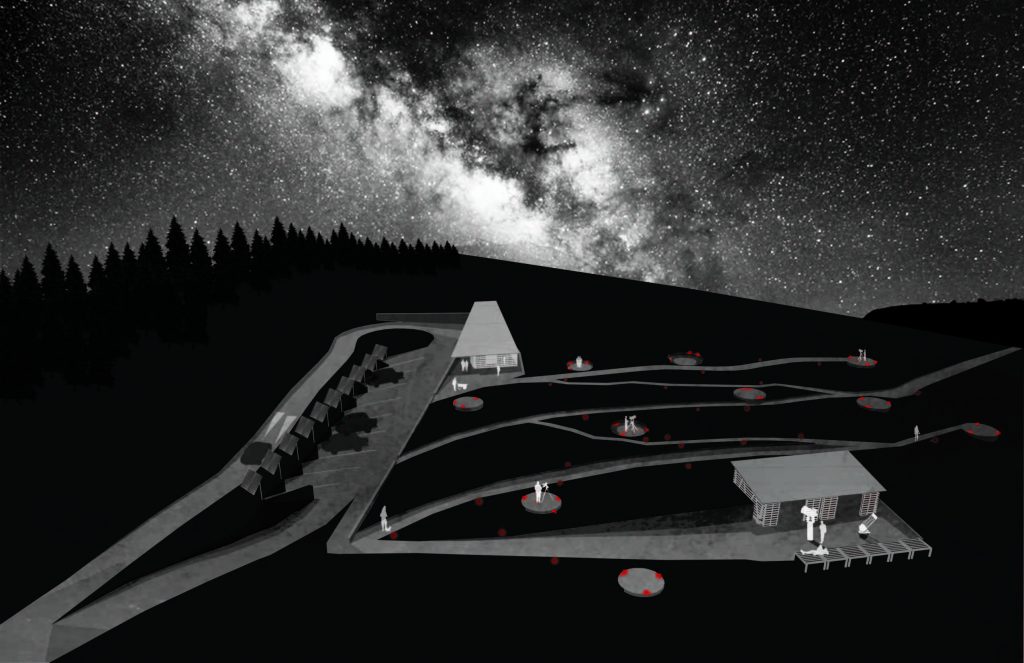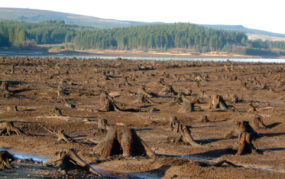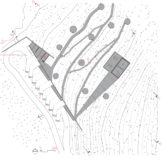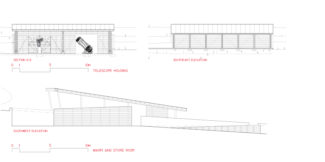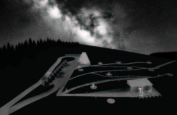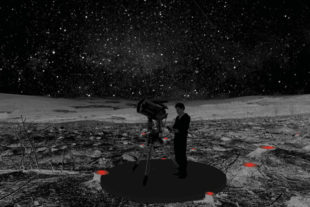To look through a telescope is literally to see into the past. This simple truth prompted a design that invisibly resolves numerous technical requirements and accentuates the earthly place, Kielder National Park, and the celestial act, star-gazing. The observatory leverages the park’s dark skies and lack of light pollution while continuing the client’s mission to create contemporary public art and architecture in the landscape. The design utilizes the stump-studded terrain and optimally locates a primary viewing pavilion with permanent telescopes and viewing platforms for amateurs. Typical star parties convene in actual or makeshift parking lots – a convenient location diminished by disruptions – namely headlights, engine noise, and exhaust. Balancing convenience with transcendence, the design carefully considers access to heighten one’s experience of the place and ritual. A vehicular drive is located and graded to minimize the impact of headlights during arrival and departure. PV panels screen headlights by night and generate power by day for nocturnal activities. Stargazers fetch carts from the service building, transfer equipment to carts, and ascend ramps. Low red lights guide gazers to observation pads. Gazers wishing to use the scopes provided ascend the last ramp, and follow a lighted path to the housing. The first to arrive enter the rear of the housing through a recessed court, fold down the front panels, and unlock the wheels. They roll the housing back, over the court, revealing a pair of mounted telescopes and an unimpeded view of the night sky, the blueprint for the project.
If…someone puts his eye to a crack in a fence, he sees cranes pulling up other cranes, scaffoldings that embrace other scaffoldings, beams that prop up other beams. “What meaning doea your construction have” he asks. “What is the aim of a city under construction unless it is a city? Where is the plan you are following, the blueprint?”
“We will show you as soon as the working day is over; we cannot interrupt our work now,” they answer.
Work stops at sunset. Darkness falls over the building site. The sky is filled with stars. “There is the blueprint,” they say.
Italo Calvino, Invisible Cities
Edit
